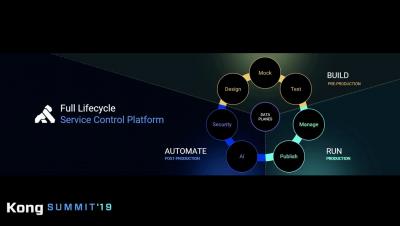Systems | Development | Analytics | API | Testing
%term
SmartBear Delivers BDD Support with Launch of Cucumber for Jira
Meeting the Multi-Cloud Management Challenge
Corporations are diverse. Consequently, the software needed to support business units tends to vary. In fact, more than eight out of 10 corporations now run multiple cloud solutions, according to Forrester Research. With recent outages across major cloud providers making news and impacting millions of customers, organizations are rightfully assessing how a multi-cloud approach can mitigate downtime risk. In this new environment, one challenge is managing the different cloud solutions.
Sidekiq Optimization and Monitoring
We often get questions about optimizing or monitoring Sidekiq. Monitoring is kind of our game, but optimizing Sidekiq’s performance is a different ball game altogether. In reality, optimizing is complex, but let’s start by looking at the seemingly simple answers…
Bugfender Growth: from side-project to a sustainable $20k MRR business
It’s nearly five years since we started Bugfender as an offshoot of our software company Mobile Jazz. We’d gotten tired of chasing users who were experiencing problems with our apps and wanted to build an internal remote logging tool that would feed the information straight to us. It really was a garage project back then. We were running code sprints on our own time, so we wouldn’t have to dig into our savings. But we soon realized this could be much more than an internal experiment.
How Does Garbage Collection Work In PHP?
Thanks to PHP being an interpreted language and it that it has a garbage collector, PHP developers don't often have to think about memory management. Unlike developers in compiled languages, such as C/C++, we don't have to give that much thought to memory allocation and deallocation. However, it's helpful to have a broad understanding of how garbage collection works in PHP, along with how you can interact with it so that you can create high performing applications.
The API-Driven Enterprise: Why Productivity Trumps Customization
Learn how becoming an API-driven enterprise will help your business unlock new revenue streams, boost productivity, and encourage innovation.
Talend's vault-based secrets revealed : Open-sourcing Vault Sidecar Injector
Handling secrets has always been a challenging and critical task within organizations.
Data Ops and Automation
My first car had a manual choke. It would change the ratio of air and fuel to allow the engine to start - you would pull it when starting the engine cold, wait a bit and then set it back. The car had many other peculiarities - a manual transmission (of course), no power steering, and the engine had a tendency to overheat in the summer - or, if going uphill, year-round.











